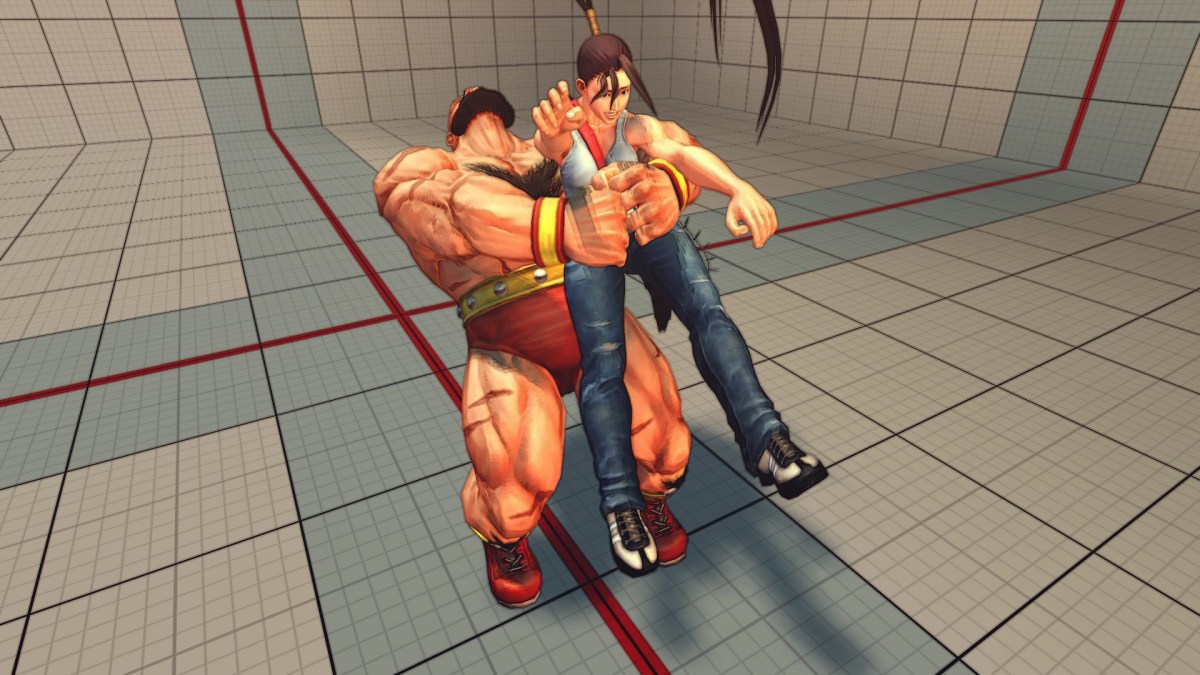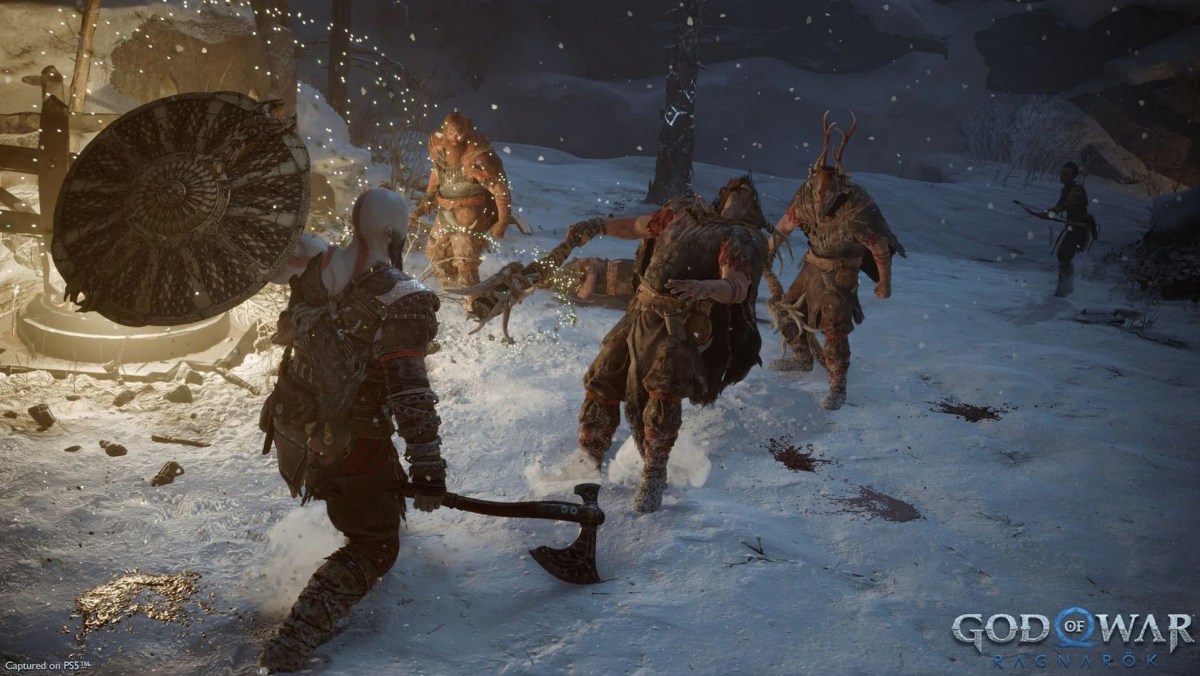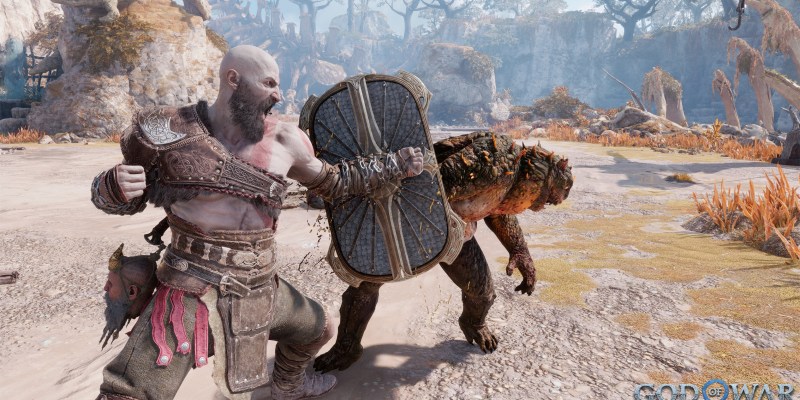In a snippet of Easter egg dialogue that went viral in God of War Ragnarok, Mimir mentions that Kratos “fought in a tournament” and that he did “battle with beasts, scoundrels, princesses, the undead, automatons, and history’s greatest musician.” This was a loving nod to Kratos’ time as a member of fighting game rosters between the releases of God of War III and the 2018 series reboot. In this case, Mimir’s line in God of War Ragnarok was referencing the 2012 crossover game PlayStation All-Stars Battle Royale, but Kratos also notably appeared in 2011’s Mortal Kombat reboot and Soulcalibur: Broken Destiny on PSP before his Norse adventures began.
The influence of fighting games runs deeper in the design of God of War Ragnarok than just some throwaway lines. YouTuber SwanyPlaysGames shared a great Q&A in October featuring game director Eric Williams and combat team leads Mihir Sheth and Denny Yeh, recorded from a discussion in the Sony Santa Monica Discord server. At one point, Sheth mentioned that the combat team has tons of fighting game fans in it and recalled that Williams would like to remind them: “If I wanna play Zangief, let me play Zangief.”
The idea of this was that they wanted every tool Kratos had at his disposal to be as viable as possible, going against games that “route” you into a couple of ultra-powerful strategies. As Williams explained it, “If you’re not willing to play this type of character, you might be out on the fringes or wanting something more.” These inspirations weren’t just present in Ragnarok’s design but even go as far back as the original trilogy. In an interview on the Friends Per Second Podcast, Williams said that he and Cory Barlog took direct inspiration from fighting game moves for some of Kratos’ attacks in the original God of War, including using similar coding for Zangief’s grab in their game.
As much as I enjoy fighting games, I am completely inept at stringing together combos and lack the reflexes to be able to respond to my opponents fast enough. Even though I can’t handle the hardest challenges of one-on-one fighters, I came into loving game combat with different kinds of action games. Action RPGs always bridged the gap for me to engage better with combat encounters because I could buff stats and devise battle maneuvers that worked best for me.

The new God of War series is a great middle ground here because there is a raft of customization options for combat and some fun stats if your lizard brain loves to make the numbers go up like mine does. However, there also aren’t any obvious “win button” strategies that’ll teach you how to take out an enemy that really bothers you. As teeth-gnashingly difficult as some of the Elden Ring bosses are when you face them head-on, cheesy builds using over-tuned status effects like Bleed and Frostbite lie just a wiki away if you want them.
I first felt the fighting game DNA in this series when I was grinding against Gunnr, the first Valkyrie fight in God of War 2018. She would obliterate my health bar in just a couple swings of her scythe and kept chasing me down with incredible speed as I fell over many attempts. I became obsessed with thinking of the proper timing to use Runic attacks or Spartan Rage, trying to predict her attacks and not just relying on the red and yellow attack cues. I even noticed a great, subtle mechanic in which stomping on healthstones would stagger her briefly to let me get some hits in.
If I were playing other games, I probably would have left, tried to get more powerful upgrades, and then returned to melt Gunnr down with the power of my high numbers. But something about the relentlessness of this encounter really motivated me to keep developing my skills and not give up because I was at a power disadvantage.
When you’re first starting out in God of War Ragnarok, you feel a little clumsy while getting the hang of all your options, much like the first sessions trying out characters in a new fighting game. The implementation of an experience system and skill tree eases players into things though, letting them focus on the maneuvers they like the most in combat and scaling up the complexity behind weapon upgrades. When you open a fighting game character’s combo page and see just an endless list of button strings with little underlying guidance, it feels like a tough hurdle to overcome just to enjoy one character.

Ragnarok has more options than ever but also has added features to stave off player confusion. The Skill Labor system was a genius touch, showing players what skills they may not realize they use more in combat and rewarding them with choices of buffs on the skills.
I also love this game’s approach to combos. There are a few basic button string combos that do good damage, but much more emphasis is put on elegantly chaining skills together instead of one combination of button presses and stick wiggling that does the most damage. The combos are easier, but the puzzle of timing strikes while surrounded by a wider variety of aggressive enemies brings in plenty of fun challenge. The first time I was juggling a Reaver in the air, then managed to aim and hook him with my blades in the air, I cheered out loud watching Kratos slam him into the ground.
With how deeply I’m getting invested in beating the combat encounters of God of War Ragnarok, I’ve realized that I probably could be a much bigger fighting game fan if I committed to learning the terms and boundaries of their combat systems. Ragnarok made excellent use of the depth and challenge you see in high-level fighting games while also having a smoother new-player experience that some of those games could learn from. I’m not saying Street Fighter 6 needs to force in an RPG system, but I think in Ragnarok’s case it was essential in communicating the combat system effectively.
